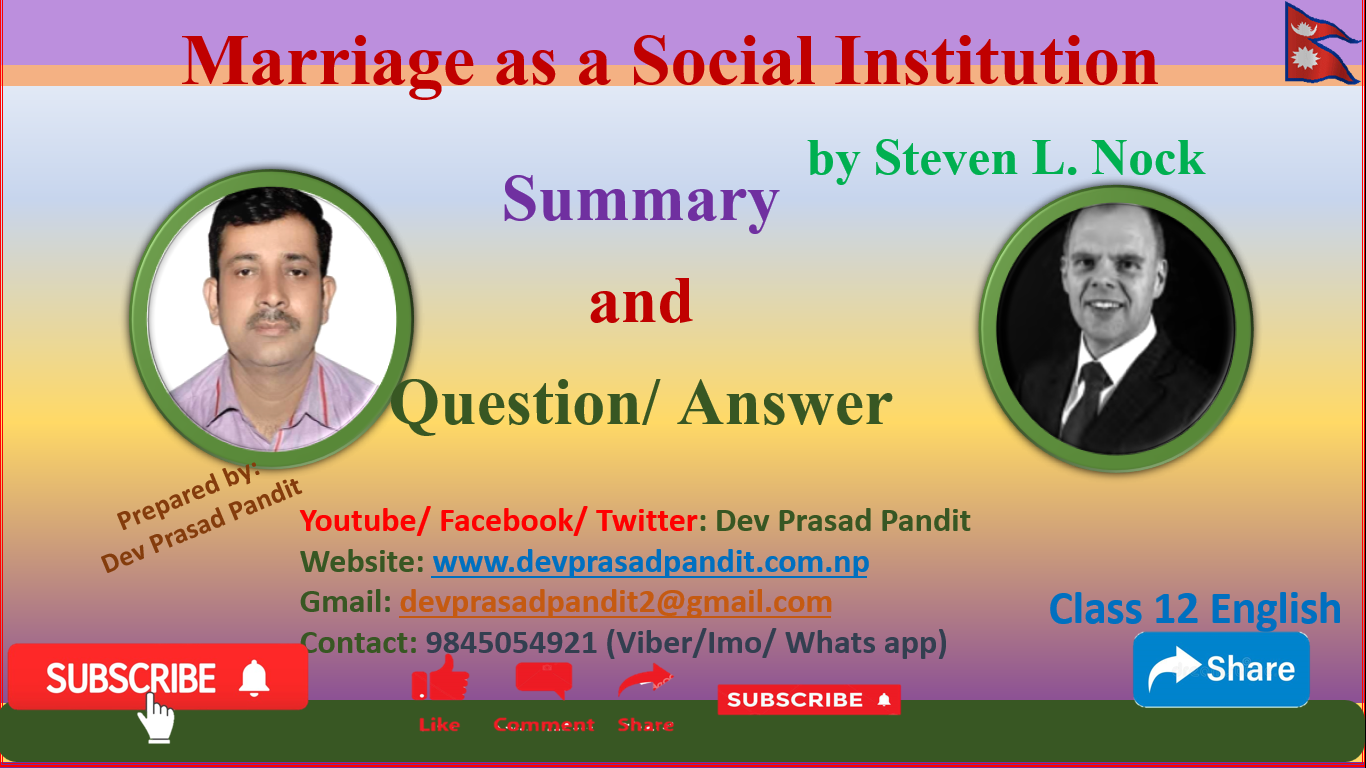MARRIAGE AS A SOCIAL INSTITUTION
UNDERSTANDING THE TEXT
a. According to the
author, what is marriage?
Answer: According
to the author, marriage is the union of two people who are legally, morally,
and culturally tied and have a variety of close personal relationships and
associations.
b. How is marriage an
institution?
Answer: Marriage
is an institution because the relationship between the couples is recognised by
social ang legal law as a means of meeting social, economic, physical, and
family requirements, and it serves many functions for a community like other
institutions.
c. What are the rules
that a marriage has?
Answer: Marriage has
a large set of rules that help in the planning and maintaining the spouses'
life.
d. Why does marriage
matter to men?
Answer: Marriage
matters to men because it provides structure to their lives and organizes their
goals and ambitions. They become responsible in social, economic, physical, and
family requirements.
e. What is one of the
central problems in modern society?
Answer: One of the
central problems in modern society is putting various legitimate boundaries
around modern individuals' limitless desires for their well-being, recreation
and prestige.
f. What does social
capital consist of?
Answer: Social
capital consists of a large network of people who are connected by a bond of reliability
and trustworthiness.
g. What is normative
marriage? Explain.
Answer: A normative marriage is the marriage which follows social norms and values or the one which is built on pre-established norms and values. For example, in the United States, the six dimensions that define normative marriage.
REFERENCE TO THE CONTEXT
a. Discuss six dimensions
that define normative marriage in America.
Answer: Marriage
exists everywhere, although the concept of marriage varies by location. Every
civilization has its own set of marital traditions and values. Whatever it is,
it allows two adults of opposite sexes the legal right to live as life
partners, satisfying each other's desires. Every marriage, in every area,
follows norms, values and patterns, and the same is true in the United States.
In America, the structured marriage known as normative marriage has six
dimensions. They are:
1. Marriage is a free personal
choice, based on love.
2. Maturity is a presumed
requirement for marriage.
3. Marriage is a heterosexual
relationship.
4. The husband is the head,
and principal earner, in a marriage.
5. Sexual fidelity and
monogamy are expectations for marriage.
6. Marriage typically involves children.
b. Do marriages differ
according to culture? How is your marriage practice different from marriage in
America?
Answer: Marriages differ according to culture. We find different types of marriages in different cultures and locations. Even within our country, the marriages of one geographical region is different from another geographical region. For example, the marriage tradition of Terai region is different from the marriage tradition of mountainous region. Similarly, the marriage practices of Hindu people are different than the practices of Buddhist people. However, the Hindu religion is followed by the majority of Nepalese people. So, it is mostly guided by Hindu religion. Marriage, in our opinion, is a social, spiritual, cultural, and legal connection between a man and a woman as husband and wife. It is also the beginning of a relationship between two families. Our marriage practices are different from those in the United States because our practices are guided by Hindu tradition, whereas the practices of United States are guided by Christian tradition. They follow different trends for wedding ceremony.
For summary CLICK HERE.
For ‘Knowledge and Wisdom’ CLICK HERE.
For all content CLICK HERE.






.png)
.png)
.png)
0 Comments